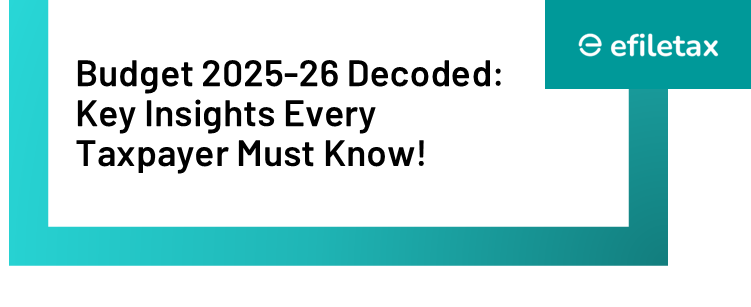
Introduction
The Union Budget 2025-26 lays the foundation for India’s fiscal and economic roadmap, outlining revenue generation, expenditure planning, taxation policies, and public investments. Understanding the budget documents helps businesses, taxpayers, and investors plan their financial strategies. Here’s a deep dive into the key aspects of Budget 2025-26 and their implications.
1. Key Budget Documents Explained
The Budget is more than just a speech; it includes various essential documents that provide clarity on government financial planning.
| Document | Purpose |
|---|---|
| Annual Financial Statement (AFS) | Estimates government receipts and expenditures for 2025-26. |
| Finance Bill | Proposes changes in tax laws and revenue measures. |
| Expenditure Budget | Breaks down government spending on various schemes. |
| Receipt Budget | Details tax and non-tax revenue sources. |
| Macro-Economic Framework Statement | Provides an economic outlook under the Fiscal Responsibility and Budget Management (FRBM) Act. |
| Budget at a Glance | A snapshot of revenue and expenditure. |
| Memorandum Explaining Finance Bill | Clarifies taxation proposals and their implications. |
Each document plays a crucial role in ensuring transparency and effective financial governance.
2. Fiscal Strategy & Economic Vision
The government follows a structured approach to fiscal planning under the FRBM Act. The Budget outlines three primary fiscal indicators:
- Fiscal Deficit: Measures the gap between government spending and revenue.
- Revenue Deficit: Indicates the shortfall in revenue receipts compared to expenditure.
- Capital Expenditure: Focuses on infrastructure and long-term investments.
The Budget emphasizes economic stability, growth, and responsible borrowing to balance social welfare and fiscal discipline.
3. Taxation Reforms & Impact on Taxpayers
Tax proposals in the Finance Bill affect businesses and individuals alike. Some key aspects include:
- Income Tax: Potential changes in tax slabs and exemptions.
- Corporate Tax: Incentives for startups, MSMEs, and investment-driven taxation.
- GST Adjustments: Rationalization of tax rates for various sectors.
- Tax Deduction & Exemptions: Changes in deductions under sections like 80C, 80D, and HRA benefits.
Understanding these changes is crucial for tax planning and compliance.
4. Public Expenditure & Investment Priorities
The Budget 2025-26 categorizes expenditure into:
- Revenue Expenditure: Operational costs like salaries, pensions, and subsidies.
- Capital Expenditure: Infrastructure, defense, and digital transformation investments.
- Social Sector Spending: Allocation for education, healthcare, and employment schemes.
A well-planned allocation ensures sustainable economic growth and social welfare.
5. Implementation of Previous Budget Announcements
Tracking the progress of prior budget commitments is essential. The 2025-26 Budget reviews the execution of:
- Infrastructure projects under the National Infrastructure Pipeline (NIP).
- Digital economy advancements, including UPI and blockchain integration.
- Atmanirbhar Bharat initiatives supporting MSMEs and startups.
- Social welfare schemes, including Direct Benefit Transfers (DBT).
The effectiveness of these measures influences future policymaking.
6. The Road Ahead: Economic Outlook & Growth Strategy
India’s economic strategy for 2025-26 focuses on:
- Boosting FDI & Ease of Doing Business: Encouraging foreign investments through policy relaxations.
- Sustainable Development & Green Economy: Enhancing renewable energy and reducing carbon footprint.
- Digital Governance & Financial Inclusion: Strengthening digital payments, fintech, and credit accessibility.
- Skill Development & Employment Generation: Expanding vocational training and job creation initiatives.
These initiatives aim to sustain growth and strengthen India’s position in the global economy.